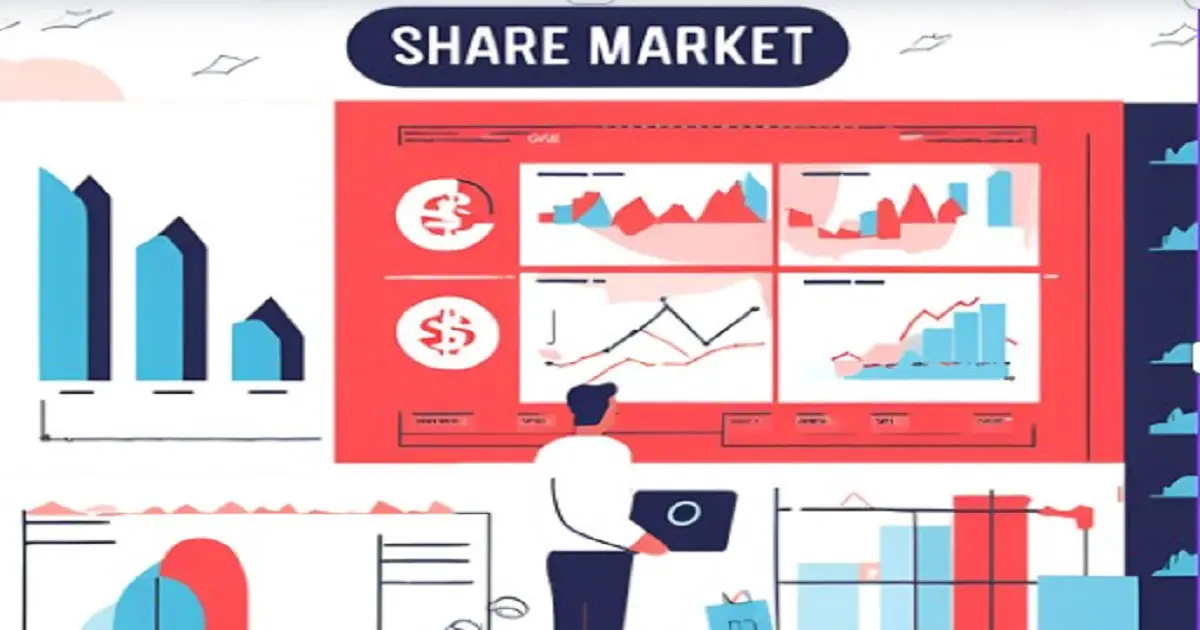
Trading and the Share Market: An In-Depth Guide
The share market, often referred to as the stock market, is a platform where buyers and sellers come together to trade stocks, bonds, and other securities. It is a cornerstone of the global financial system and plays a pivotal role in the economic development of nations. Trading in the share market involves buying and selling these securities with the goal of making a profit. This comprehensive guide aims to provide an understanding of how the share market works, the types of trading, key strategies, and the risks involved.
What is the Share Market?
The share market is a network of exchanges where stocks (pieces of ownership in businesses) are bought and sold. The two primary types of markets are:
- Primary Market: This is where companies issue new securities to the public for the first time, such as through an Initial Public Offering (IPO). Investors buy shares directly from the company.
- Secondary Market: After the initial issuance, securities are traded among investors on the secondary market. Here, the stock exchanges like the New York Stock Exchange (NYSE), NASDAQ, London Stock Exchange (LSE), and Bombay Stock Exchange (BSE) serve as the marketplace for these transactions.
Types of Trading in the Share Market
There are several types of trading in the share market, each catering to different risk appetites, time horizons, and strategies:
- Day Trading: Day traders buy and sell securities within a single trading day. The objective is to capitalize on short-term market fluctuations. Day trading is risky but can be highly profitable for those who can predict market movements.
- Swing Trading: This involves holding stocks for a few days to a few weeks. Swing traders aim to capture a portion of the potential price movement by identifying "swings" in stocks and other securities.
- Position Trading: Position traders hold their stocks for longer periods, ranging from weeks to months or even years. The goal is to capture large price movements. This type of trading requires a good understanding of fundamental analysis.
- Scalping: This is a short-term trading strategy where traders take advantage of small price gaps created by order flows or spreads. Scalpers aim to make numerous small profits throughout the day.
- Algorithmic Trading: In this method, traders use complex algorithms and computer programs to execute trades based on predefined criteria. It is primarily used by institutional investors and high-frequency traders.
Key Players in the Share Market
- Retail Investors: Individuals who buy and sell securities for their personal accounts. They usually trade in smaller amounts compared to institutional investors.
- Institutional Investors: Large entities such as mutual funds, pension funds, insurance companies, and hedge funds. They have significant financial resources and can influence market prices with their trades.
- Market Makers: These are entities that provide liquidity to the market by buying and selling securities from their own accounts. They ensure smoother and more stable market conditions.
- Brokers: Intermediaries who facilitate the buying and selling of securities for investors in exchange for a commission.
Fundamental Analysis vs. Technical Analysis
When it comes to deciding what to buy or sell in the share market, two main types of analysis are used:
- Fundamental Analysis: This approach involves evaluating a company's intrinsic value based on its financial statements, management, economic conditions, and competitive position. Fundamental analysts believe that the market may misprice a stock in the short term, but its true value will eventually be reflected.
- Technical Analysis: This is the study of historical market data, primarily price and volume, to forecast future price movements. Technical analysts use charts, patterns, and indicators to predict trends. They believe that all available information is already reflected in the stock price.
Key Indicators and Tools for Trading
Successful traders use a variety of indicators and tools to make informed decisions:
- Moving Averages (MA): Moving averages smooth out price data to identify the direction of a trend. Common types include Simple Moving Average (SMA) and Exponential Moving Average (EMA).
- Relative Strength Index (RSI): RSI is a momentum oscillator that measures the speed and change of price movements. It ranges from 0 to 100 and is used to identify overbought or oversold conditions.
- Bollinger Bands: These are volatility bands placed above and below a moving average. When the bands widen, it indicates high volatility; when they contract, it indicates low volatility.
- Fibonacci Retracement Levels: Traders use these horizontal lines to identify potential support and resistance levels.
- Volume: The number of shares traded within a particular period. Volume analysis helps traders confirm trends and reversals.
Common Trading Strategies
- Trend Following: This strategy involves identifying stocks that are trending upwards or downwards and buying or selling accordingly. The idea is to "ride the trend" until it shows signs of reversing.
- Breakout Trading: Traders look for stocks that break out of a defined range. Breakouts are often followed by strong price movements, presenting an opportunity to capitalize on these moves.
- Mean Reversion: Based on the idea that prices and returns eventually move back toward the mean or average, this strategy involves buying undervalued stocks and selling overvalued ones.
- Arbitrage: This strategy involves buying a security in one market and selling it in another to exploit price differences. It is a risk-free profit but requires quick execution and significant capital.
- Options Trading: Options are financial derivatives that give the right, but not the obligation, to buy or sell a stock at a predetermined price. Traders use options to hedge against potential losses or to speculate on stock movements.
Risks Involved in Share Market Trading
Trading in the share market comes with inherent risks. Some of the common risks are:
- Market Risk: The risk of losses due to market fluctuations. Factors like economic downturns, political instability, or natural disasters can affect the entire market.
- Liquidity Risk: The risk that an investor might not be able to buy or sell securities quickly without a significant price change. Stocks with low trading volumes are particularly vulnerable.
- Credit Risk: This is the risk that a company or bond issuer may default on its obligations. Credit risk is particularly relevant for bond investors.
- Operational Risk: The risk of losses arising from failures in internal processes, systems, or people, such as trading errors or system failures.
- Leverage Risk: Leverage allows traders to magnify their gains but also amplifies potential losses. It can lead to a total loss of invested capital and more.
Psychological Aspects of Trading
Successful trading is not just about strategy and analysis; psychology plays a significant role as well. Some common psychological traps traders face include:
- Fear and Greed: Fear of losing money can lead to early exits from potentially profitable trades, while greed can result in holding onto losing trades in the hope of a turnaround.
- Overconfidence: Traders who overestimate their knowledge or ability can take excessive risks, leading to substantial losses.
- Confirmation Bias: This occurs when traders look for information that confirms their preconceptions while ignoring evidence that contradicts them.
- Herd Mentality: Traders often follow the crowd without conducting their analysis, leading to irrational decisions.
Regulatory Environment of the Share Market
The share market is highly regulated to ensure transparency, fairness, and investor protection. Key regulatory bodies include:
- Securities and Exchange Commission (SEC): In the United States, the SEC regulates securities markets, enforces securities laws, and ensures that markets are fair and orderly.
- Financial Conduct Authority (FCA): The FCA oversees financial markets in the United Kingdom.
- Securities and Exchange Board of India (SEBI): SEBI regulates the securities market in India, ensuring that it operates in a transparent and orderly manner.
- Other Global Regulators: Other countries have their own regulatory bodies, such as the Australian Securities and Investments Commission (ASIC) in Australia and the Canadian Securities Administrators (CSA) in Canada.
How to Start Trading in the Share Market
If you're interested in trading in the share market, here are some steps to get started:
- Educate Yourself: Learn about the different types of trading, market analysis, and trading strategies. Understand the risks involved and develop a trading plan.
- Choose a Broker: Select a reliable and regulated broker that offers the tools and platforms suitable for your trading style.
- Open a Trading Account: Once you've chosen a broker, open a trading account. You'll need to provide personal information, financial details, and identification.
- Start with Paper Trading: Before risking real money, practice with a simulated trading account. This allows you to test your strategies without financial risk.
- Begin Trading with Small Capital: Start with a small amount of capital that you can afford to lose. As you gain experience and confidence, gradually increase your investment.
- Manage Risk: Always use risk management techniques such as stop-loss orders and position sizing to protect your capital.
The Future of Trading and the Share Market
The share market is evolving rapidly, driven by technological advancements, increased retail participation, and regulatory changes. Some trends shaping the future of trading include:
- Artificial Intelligence (AI) and Machine Learning: These technologies are revolutionizing trading by enabling the analysis of vast datasets to identify patterns and trends that humans might miss.
- Robo-Advisors: Automated investment platforms are becoming increasingly popular, providing low-cost, algorithm-driven financial planning services.
- Blockchain and Cryptocurrencies: Blockchain technology is being explored to improve transparency and reduce fraud in trading, while cryptocurrencies are emerging as a new asset class.
- Increased Retail Participation: More people are getting involved in trading, thanks to user-friendly platforms, low-cost trading apps, and increased financial literacy.
- Environmental, Social, and Governance (ESG) Investing: ESG factors are becoming an important consideration for investors, influencing stock prices and corporate strategies.
Conclusion
Trading in the share market is a dynamic and challenging endeavor that requires a deep understanding of market mechanics, analysis techniques, and risk management strategies. While the potential for profit is significant, so too are the risks. Success in the market is not guaranteed and requires continuous learning, discipline, and emotional control. As the trading landscape evolves with technological advancements and changing regulations, staying informed and adaptable will be key to navigating the future of the share market.












